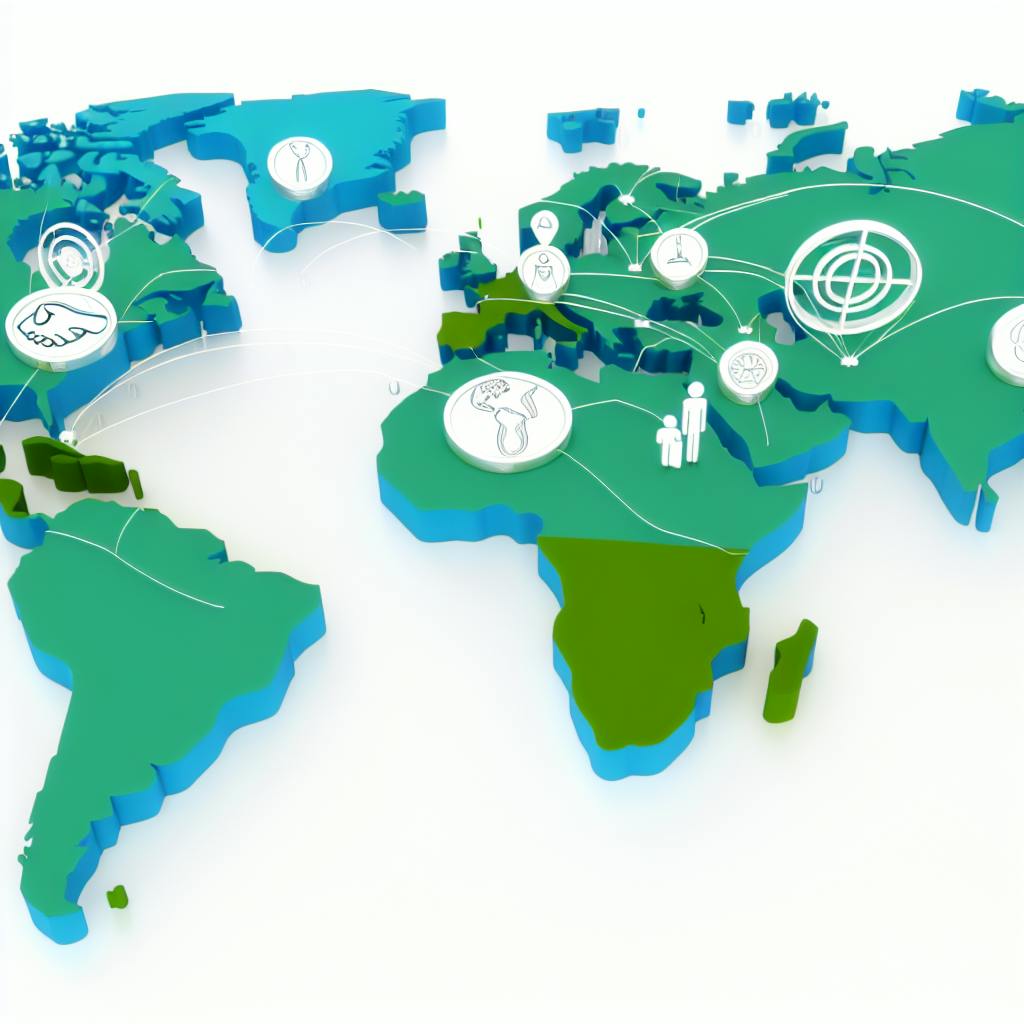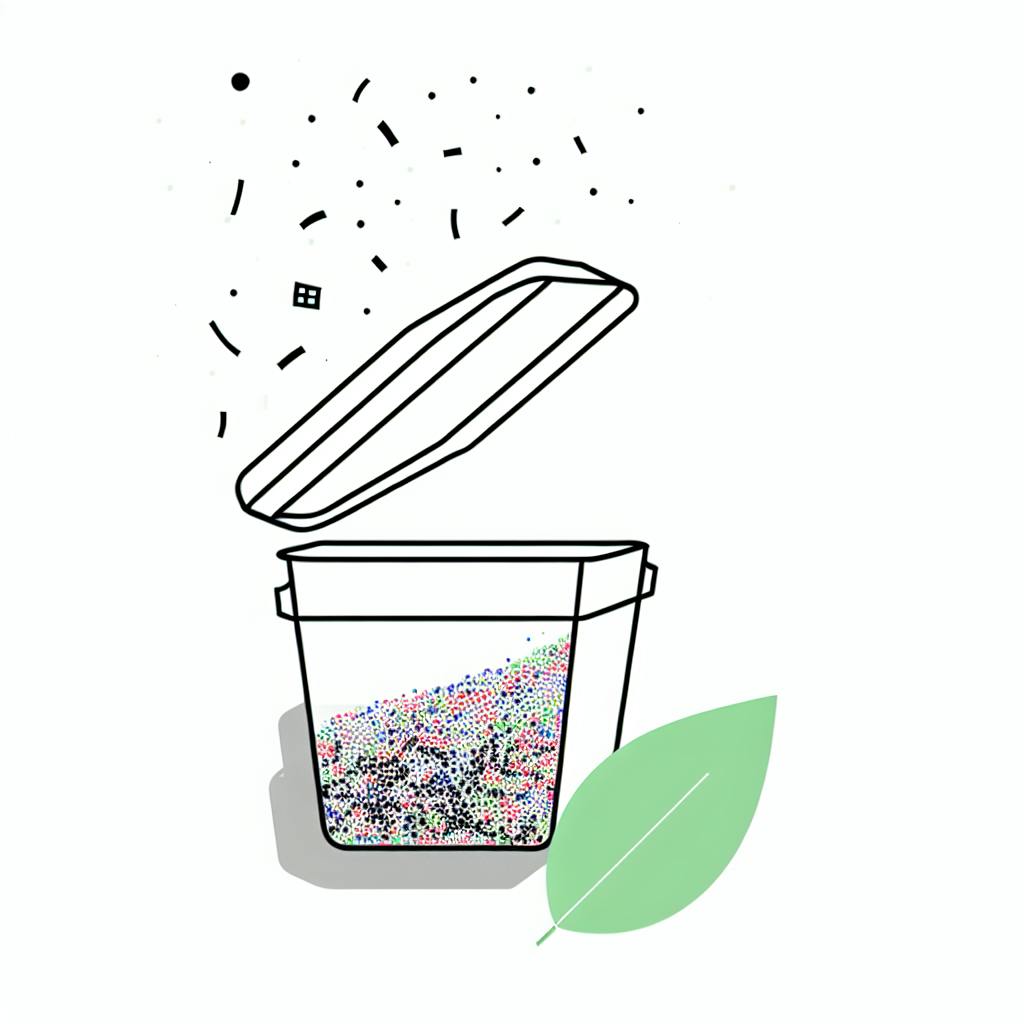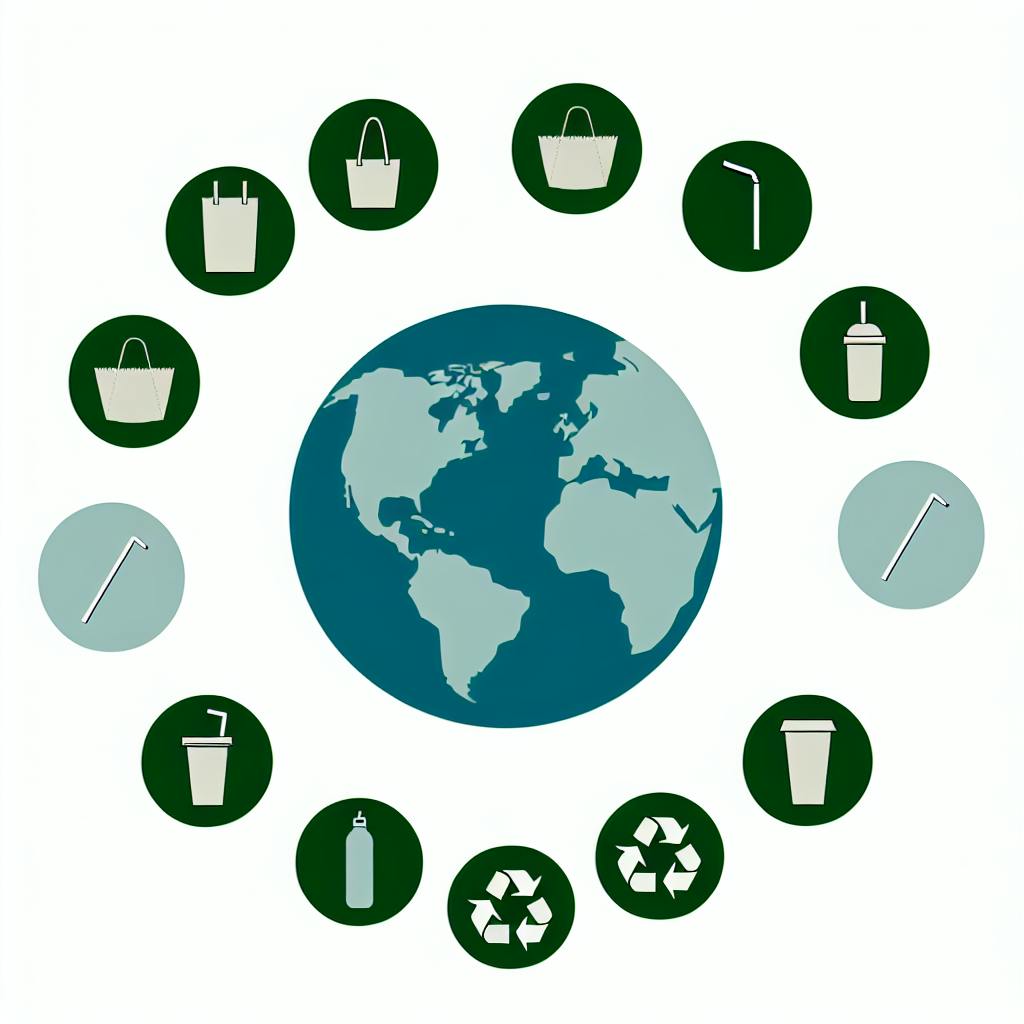Microplastics are tiny plastic particles that are found everywhere, from oceans to mountaintops and even the air we breathe. These minuscule pollutants interact with water, air, and soil, exacerbating greenhouse gas emissions and hindering the planet's ability to mitigate climate change.
Key Impacts of Microplastics on Climate Change
| Environment | Impact |
|---|---|
| Oceans | Reduce phytoplankton growth, disrupting the biological carbon pump |
| Air | Aid in cloud formation and interfere with atmospheric cooling |
| Soil | Induce greenhouse gas emissions, accelerating climate change |
To address this critical issue, we must take a multifaceted approach involving individual actions, policy interventions, and community-level initiatives.
Reducing Microplastic Climate Change Impacts
-
Individual Actions:
- Avoid single-use plastics
- Choose eco-friendly clothing
- Use microplastic-free cosmetics
- Reduce shellfish consumption
- Use public transportation
-
Policy Interventions:
- Implement extended producer responsibility
- Ban single-use plastics
- Invest in waste management infrastructure
- Promote sustainable agriculture
-
Community-Level Initiatives:
- Organize beach cleanups
- Support local initiatives
- Educate and raise awareness
- Develop microplastic-reducing technologies
By working together, we can reduce our plastic footprint and mitigate the devastating effects of climate change.
Defining Microplastic Types and Sources
Microplastics are tiny plastic particles that are less than 5 millimeters in size. They can be classified into two main categories: primary and secondary microplastics.
Primary Microplastics
Primary microplastics are intentionally manufactured for commercial use. They include:
| Type | Description |
|---|---|
| Microbeads | Used in personal care products like face wash, toothpaste, and cosmetics |
| Plastic pellets | Used in industrial manufacturing processes |
| Synthetic fibers | Used in clothing, textiles, and fishing nets |
| Healthcare microplastics | Used in the healthcare and pharmaceutical sectors |
| Oil and gas microplastics | Used as additives to drilling fluids |
Secondary Microplastics
Secondary microplastics are formed from the breakdown of larger plastic items, such as:
| Source | Description |
|---|---|
| Plastic bags | Break down into smaller pieces over time |
| Bottles | Break down into smaller pieces over time |
| Microfibers | From clothing and textiles, released during washing and drying |
| Fishing gear | Breaks down into smaller pieces over time |
Sources of Microplastics
Microplastics can enter the environment through various sources, including:
| Source | Description |
|---|---|
| Wastewater treatment plants | Release microplastics into the environment through treated wastewater |
| Manufacturing facilities | Release microplastics during the production process |
| Littered or dumped plastic items | Break down into microplastics over time |
| Synthetic fibers from clothing | Released during washing and drying |
Understanding the types and sources of microplastics is crucial for addressing their environmental impacts and developing effective strategies for mitigation.
Microplastics and the Carbon Cycle
Microplastics have a significant impact on the carbon cycle, affecting the ability of oceans and soils to store carbon and contributing to global warming. The carbon cycle is the process by which carbon is exchanged between the atmosphere, oceans, land, and living organisms.
Microplastics in Oceans
Oceans play a crucial role in the carbon cycle, absorbing approximately 25% of the carbon dioxide released into the atmosphere. Microplastics in oceans:
- Reduce phytoplankton growth, essential for carbon sequestration
- Alter marine ecosystems, leading to changes in carbon storage and cycling
- Increase the release of greenhouse gases, such as methane and nitrous oxide, from ocean sediments
Microplastics in Soils
Soils store approximately 2,500 billion metric tons of carbon. Microplastics in soils:
- Impede soil biota, reducing decomposition of organic matter and carbon sequestration
- Alter soil structure and fertility, affecting plant growth and carbon storage
- Increase the release of greenhouse gases, such as carbon dioxide and nitrous oxide, from soil decomposition
Consequences for Global Warming
The disruption of the carbon cycle by microplastics has significant implications for global warming. As microplastics accumulate in oceans and soils, they:
| Consequence | Description |
|---|---|
| Enhance greenhouse gas emissions | Contributing to climate change |
| Reduce carbon sequestration | Exacerbating global warming |
| Create a self-reinforcing feedback loop | Accelerating climate change |
Understanding the impact of microplastics on the carbon cycle is crucial for developing effective strategies to mitigate climate change. By addressing microplastic pollution, we can help restore the balance of the carbon cycle and reduce the rate of global warming.
Microplastics and Greenhouse Gas Emissions
Microplastics play a significant role in increasing greenhouse gas emissions, which contribute to climate change. These tiny particles interact with water, air, and soil, leading to the release of gases that warm the planet.
Microplastics in Water
Microplastics in water bodies:
- Reduce phytoplankton growth, which absorbs carbon dioxide during photosynthesis
- Alter marine ecosystems, leading to changes in carbon storage and cycling
- Increase the release of methane and nitrous oxide, potent greenhouse gases, from ocean sediments
Microplastics in Soil
Microplastics in soils:
- Impede soil biota, reducing decomposition of organic matter and carbon sequestration
- Alter soil structure and fertility, affecting plant growth and carbon storage
- Increase the release of carbon dioxide and nitrous oxide from soil decomposition
Airborne Microplastics
Airborne microplastics can also contribute to greenhouse gas emissions by:
- Scattering and absorbing sunlight, influencing Earth's temperature
- Affecting cloud formation and precipitation patterns, leading to changes in global climate
Understanding the relationship between microplastics and greenhouse gas emissions is crucial for developing effective strategies to mitigate climate change. By addressing microplastic pollution, we can help reduce the rate of global warming and protect the environment.
| Microplastic Source | Impact on Greenhouse Gas Emissions |
|---|---|
| Water | Reduces phytoplankton growth, alters marine ecosystems, and increases methane and nitrous oxide release |
| Soil | Impedes soil biota, alters soil structure and fertility, and increases carbon dioxide and nitrous oxide release |
| Air | Scatters and absorbs sunlight, affecting Earth's temperature, and alters cloud formation and precipitation patterns |
By recognizing the impact of microplastics on greenhouse gas emissions, we can take steps to reduce microplastic pollution and mitigate climate change.
Soil Health Impacts of Microplastics
Microplastics in soil can have devastating effects on soil health, which in turn can impact climate regulation. The presence of microplastics in soil can alter soil structure and fertility, affecting plant growth and carbon storage. Additionally, microplastics can impede soil biota, reducing decomposition of organic matter and carbon sequestration.
Impact on Soil Microbiome
Research has shown that microplastics can interact with soil fauna, leading to a decrease in species that live below the surface, such as mites, larvae, and other tiny creatures that maintain the fertility of the land. This can have a cascading effect on the entire ecosystem, leading to changes in soil carbon dioxide emissions and microbial functional genes involved in organic carbon decomposition.
Effects on Soil Carbon Cycling
Studies have also shown that microplastics can affect soil carbon dioxide emissions, with high doses of microplastics significantly accelerating the production of CO2 in soils. This is likely due to the fact that microplastics can stress microbes, leading to an increase in CO2 emission. Furthermore, microplastics can also reduce the functional genes related to starch, hemicellulose, cellulose, and lignin degradation, which can further impact soil carbon cycling.
Factors Influencing Microplastic Impact
The type, shape, and concentration of microplastics can also influence their impact on soil health. For example, spherical microplastics with different polymers (such as polyethylene, polystyrene, and polypropylene) can have distinct effects on soil bacterial communities. Similarly, the concentration of microplastics can also affect the soil microbiome, with high concentrations leading to significant changes in soil bacterial composition.
| Microplastic Factor | Impact on Soil Health |
|---|---|
| Type | Affects soil bacterial communities |
| Shape | Influences soil biota and carbon cycling |
| Concentration | Impacts soil microbiome and carbon dioxide emissions |
Overall, the impact of microplastics on soil health is a complex issue that requires further research and attention. By understanding the effects of microplastics on soil structure, microbiome, and carbon cycling, we can develop effective strategies to mitigate their impact on climate regulation.
sbb-itb-1dc3f59
Ecosystems Affected by Microplastic Pollution
Microplastic pollution has far-reaching consequences for ecosystems, affecting not only soil health but also biodiversity, ecosystem services, and human health.
Terrestrial Ecosystems
Microplastics in soil can alter soil structure and fertility, affecting plant growth and carbon storage. This can impact terrestrial ecosystems, leading to changes in species composition and ecosystem function.
| Effect on Terrestrial Ecosystems | Description |
|---|---|
| Changes in species composition | Microplastics can alter the types of species present in an ecosystem |
| Changes in ecosystem function | Microplastics can impact the way an ecosystem functions, leading to changes in nutrient cycling and decomposition |
Aquatic Ecosystems
Microplastics in aquatic ecosystems can have devastating effects on marine life. Because they are so small, wildlife can mistake microplastics for food, leading to ingestion and potential harm.
| Effect on Aquatic Ecosystems | Description |
|---|---|
| Ingestion by wildlife | Microplastics can be ingested by wildlife, leading to potential harm |
| Attraction and transport of pollutants | Microplastics can attract and transport pollutants, releasing chemicals into the environment |
Human Health Impacts
The impact of microplastic pollution on human health is still being researched, but it is clear that microplastics can enter the food chain and potentially harm human health.
| Human Health Impact | Description |
|---|---|
| Ingestion of microplastics | Microplastics can be ingested through contaminated food and water |
| Potential harm to human health | Microplastics can potentially harm human health, although more research is needed to understand the extent of the impact |
Overall, the ecosystems affected by microplastic pollution are diverse and far-reaching, highlighting the need for urgent action to reduce microplastic pollution and mitigate its impacts on the environment and human health.
Reducing Microplastic Climate Change Impacts
To reduce the impact of microplastics on climate change, we need to take a multifaceted approach that involves individual actions, policy interventions, and community-level initiatives.
Individual Actions
Here are some simple steps you can take to make a difference:
- Avoid single-use plastics: Refuse single-use plastics like straws, bags, and water bottles.
- Choose eco-friendly clothing: Opt for clothing made from natural fibers like cotton, silk, and wool.
- Use microplastic-free cosmetics: Select cosmetics and personal care products that do not contain microbeads or other plastic particles.
- Reduce shellfish consumption: Limit your consumption of shellfish, which can contain microplastics.
- Use public transportation: Using public transportation, walking, or cycling can reduce the amount of microplastics generated by car tires.
Policy Interventions
Governments and policymakers can take the following steps:
| Policy Intervention | Description |
|---|---|
| Implement extended producer responsibility | Encourage manufacturers to take responsibility for the waste generated by their products. |
| Ban single-use plastics | Prohibit the use of single-use plastics, such as straws, bags, and cutlery, to reduce microplastic pollution. |
| Invest in waste management infrastructure | Develop effective waste management systems to prevent microplastics from entering the environment. |
| Promote sustainable agriculture | Encourage sustainable agricultural practices that reduce the use of synthetic fertilizers and pesticides, which can contribute to microplastic pollution. |
Community-Level Initiatives
Here are some ways communities can come together to reduce microplastic pollution:
- Organize beach cleanups: Participate in beach cleanups and community events to raise awareness about microplastic pollution.
- Support local initiatives: Encourage local businesses and organizations to adopt sustainable practices and reduce microplastic waste.
- Educate and raise awareness: Educate individuals, especially children, about the impacts of microplastics on climate change and the importance of reducing plastic waste.
- Develop microplastic-reducing technologies: Support research and development of technologies that can help reduce microplastic pollution, such as filters for washing machines and dryers.
By working together, we can reduce the impacts of microplastics on climate change and promote a more sustainable future.
Conclusion: Microplastics and Climate Change
Microplastics have a significant impact on climate change, and it's essential to address this issue urgently. The production, use, and disposal of plastics contribute to greenhouse gas emissions, and microplastics in the environment can alter the carbon cycle, affecting the ocean's ability to mitigate climate change.
The Need for Action
To mitigate the effects of microplastics on climate change, we must take a multifaceted approach that involves:
- Individual actions: Reduce plastic consumption, increase recycling, and promote sustainable practices.
- Policy interventions: Implement extended producer responsibility, ban single-use plastics, and invest in waste management infrastructure.
- Community-level initiatives: Organize beach cleanups, support local initiatives, educate individuals, and develop microplastic-reducing technologies.
A Collective Effort
Addressing the impact of microplastics on climate change requires a collective effort and a commitment to reducing our plastic footprint. By working together, we can promote a more sustainable future and mitigate the devastating effects of climate change.
| Action | Description |
|---|---|
| Reduce plastic consumption | Limit single-use plastics and choose eco-friendly alternatives. |
| Increase recycling | Properly recycle plastics to reduce waste and minimize microplastic generation. |
| Promote sustainable practices | Encourage sustainable agriculture, reduce synthetic fertilizer use, and adopt environmentally friendly habits. |
| Implement policy interventions | Encourage governments to implement extended producer responsibility, ban single-use plastics, and invest in waste management infrastructure. |
| Organize community initiatives | Participate in beach cleanups, support local initiatives, educate individuals, and develop microplastic-reducing technologies. |
FAQs
How are microplastics affecting climate change?
Microplastics are having a significant impact on climate change. They interact with water, air, and soil, contributing to greenhouse gas emissions and hindering the ocean's ability to mitigate climate change.
Effects of Microplastics on Climate Change
| Environment | Impact |
|---|---|
| Soil | Promote greenhouse gas emissions, directly contributing to climate change |
| Air | Scatter and absorb sunlight, influencing Earth's temperature |
| Ocean | Disrupt the biological carbon pump, a process that helps sequester carbon dioxide from the atmosphere |
Overall, microplastics are exacerbating the climate crisis, and it's essential to address this issue urgently.


